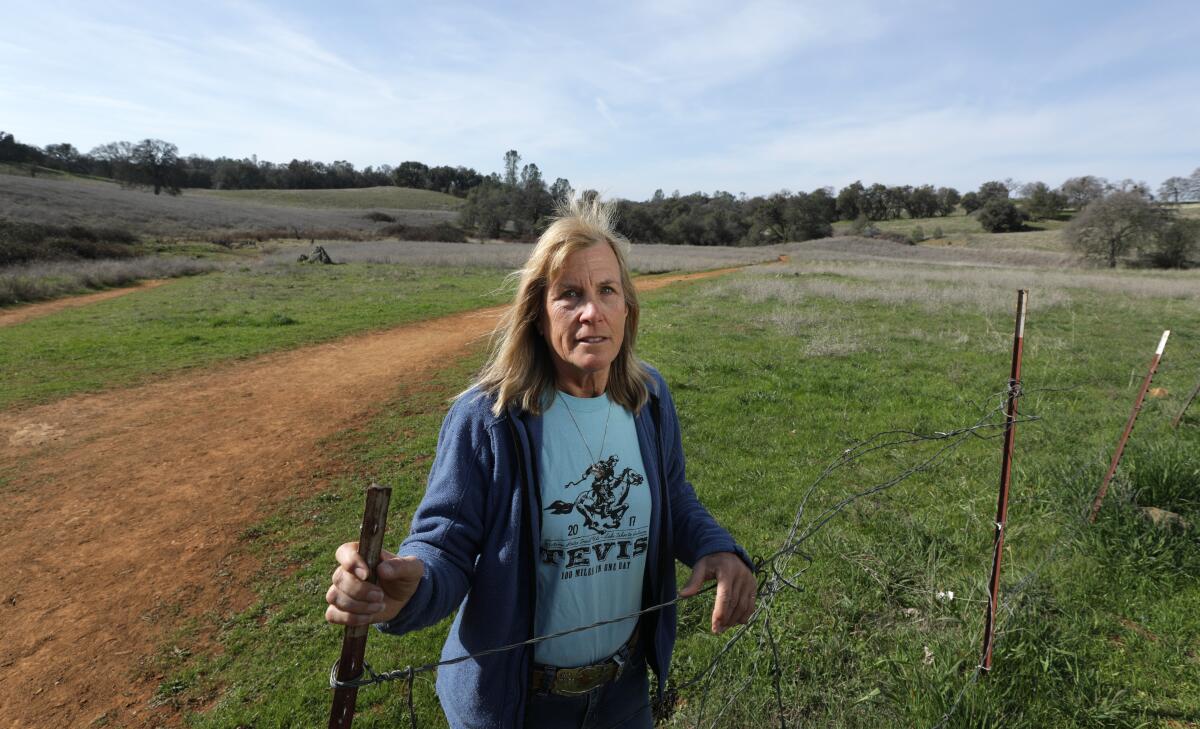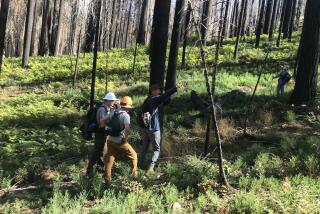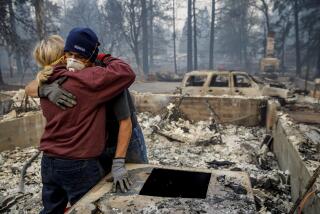A crowded park, worsening fire danger sparks battle: ‘I don’t feel safe there anymore’

The Auburn State Recreation Area occupies 40 miles of steep river canyons and rugged terrain in drought-stricken El Dorado and Placer counties.
The counties, which stretch from the Sacramento suburbs into the Sierra, are two of the fastest growing in California, experiencing a population boom that was hastened during the COVID-19 pandemic by urban expats fleeing expensive cities with a newfound ability to work remotely.
They are also two of the places in California that burn the most.
The wildland-urban interface — where human development intermingles with wild places such as forests, grasslands and scrublands — is the fastest-growing land-use type in the United States.
An estimated 1 in 3 houses in the country is now situated in these wildfire-prone landscapes, and now half the population in the West live there, said Kimiko Barrett, a wildfire policy expert at Headwaters Economics, a nonprofit research group that focuses on land use and development.
From 2005 to 2020, nearly 60,000 structures were destroyed by wildfires in California — comprising 67% of the 89,210 structures to burn in the entire U.S. during that time, according to Headwaters Economics.
“We continue to move to these locations,” Barrett said. “We think, ‘It’s not going to happen to me.’ We forget past wildfires. ... It’s a myopic outlook, thinking risk is far off in the future.”
The risk is here — now — but there is no suggestion that population booms in these areas are going to stop, even as the climate changes and wildfires become more volatile.

California is now considering a controversial plan to accommodate growing use of the Auburn State Recreation Area, 40 miles northeast of Sacramento. Residents in foothill communities and local fire agencies are enraged by a proposal by California State Parks and the U.S. Bureau of Reclamation that would allow up to 142 new campsites to be built in the crowded park.
California State Parks said new campsites are being proposed as an attempt to manage inevitable overcrowding.
“With the projected growth, if no improvements are made within the park unit, risk of wildfire and impacts to evacuation routes would be higher than if improvements from the general plan were implemented,” State Parks said in a statement to The Times on Friday.
The plan, which would allow the building of up to 135 individual campsites and seven group sites, will be considered by the California State Park and Recreation Commission at its meeting Sept. 30.
“Often when people are opposed to development, it’s for issues of convenience: issues of traffic, noise, et cetera,” said John Michelini, board president of the Foresthill Fire Protection District, one of several public safety agencies opposed to the plan. “This is a matter of life and death and people’s properties.”
Many residents of the small, vulnerable foothill communities surrounding the state park — which are accessed via steep, narrow roads — cite the 2018 Camp fire, which killed 85 people and ripped through Paradise, another mountain town with few paths in and out. Thousands of people trying to flee were stuck in traffic as buildings around them burned. Some died in their vehicles as flames roared over them.
“All you have to do is think about what happened in Paradise, where limited roads cost a lot of lives for people trying to get out that couldn’t,” said Tom Judy, a geologist who has lived in Greenwood, near the state park, for two decades. “That’s one of our greatest fears here.”
On Labor Day weekend, a fire broke out in the Auburn State Recreation Area that was the kind of human-caused disaster that many worry about.
The Bridge fire — which, according to the California Department of Forestry and Fire Protection, was sparked by an arsonist — burned 411 acres. It forced the park’s closure, shut down roads that are critical escape routes, and jammed others with fleeing cars and emergency vehicles.
The surge of migration eastward fits a pattern of families escaping densely populated cities, a trend that dates back to the mid-20th century.
Skyler Fulster was steering a boat on Lake Clementine within the park that simmering Sunday when a plume of dark smoke suddenly blotted out the sun. A park ranger, sirens blaring on his boat, sped to each boat, urging people to get off the water.
As he waited for hours with other boaters in a campground, Fulster’s thoughts turned to the narrow roads nearby.
“I was worried about how we would get out of there,” he said.
Numerous fires have burned in and around El Dorado and Placer counties this summer, including: the River fire, which started in a campground near the Auburn State Recreation Area and destroyed 142 structures; the massive Caldor fire, which decimated the town of Grizzly Flats and threatened South Lake Tahoe; and the Bridge fire, which closed the main escape road for the town of Foresthill.
Cal Fire has given much of the Auburn State Recreation Area its most extreme fire danger rating.
The park and nearby towns have already felt the strain of overcrowding due to population growth in the Sacramento suburbs and more people seeking outdoor activities during the pandemic.

Traffic regularly backs up along the two-lane Highway 49, a slow, steep drive with hairpin curves near the American River Confluence and several hiking trails.
Cars park illegally along narrow shoulders. Hikers and bikers flit into oncoming traffic.
The situation got so bad that the city of Auburn launched a bus service this spring to ferry people between downtown and the river, and the park has restricted parking in other areas where congestion threatened to block emergency vehicles.
Lorna Dobrovolny, a former State Parks employee who lives in the town of Cool, said she used to spend every day in the Auburn State Recreation Area, running, hiking and riding her horse. She goes elsewhere now to avoid the crowds.
Locals “have been somewhat displaced due to the congestion. I don’t feel safe there anymore,” said Dobrovolny, 64
Dobrovolny said building more campsites will only invite more people, more campfires and more risk.
In rural Cool, California, gentrification looks like this: a Dollar General store and new campsites
California State Parks told The Times last year that visitation to the park had increased about 400% since 1992. The 717-page proposed general plan says visitation is predicted to grow 30% by 2040 because of regional population growth.
Campsites commonly sell out within minutes of becoming available for reservation.
“When visitation occurs in an unmanaged fashion away from appropriately designed facilities, visitors are more likely to engage in risky or unauthorized behavior, such as creating illegal campfires or using fireworks,” the proposed plan says.
There are currently 36 campsites within the park. An earlier version of the plan would have allowed more than 220 new sites, but that number was scaled back amid public outcry.
The plan does not authorize immediate construction of new campsites, and each new facility would require site-specific planning and evaluation of whether campfires should be allowed, State Parks told The Times.
In surrounding towns, residents say home values have plummeted and insurers have raised rates or canceled some homeowner policies in recent years, citing fire risk and proximity to campsites.

Judy, 61, said his longtime insurer canceled his homeowner policy last year. When he complained, he said, the company gave him an emergency kit with a flashlight, first-aid supplies and a thin emergency shelter tent.
Fulster, 29, grew up in Cool and now lives in the El Dorado County town of Pollock Pines. He said he was evacuated from the Caldor fire for 17 days and had been allowed back to his home four days before visiting Lake Clementine for a little relaxation in the park.
He was flabbergasted as he and his buddies were evacuated from the water because of a siege of flames.
“It seemed a little unreal,” Fulster said. “It was almost like some dark comedy.”
More to Read
Start your day right
Sign up for Essential California for news, features and recommendations from the L.A. Times and beyond in your inbox six days a week.
You may occasionally receive promotional content from the Los Angeles Times.









